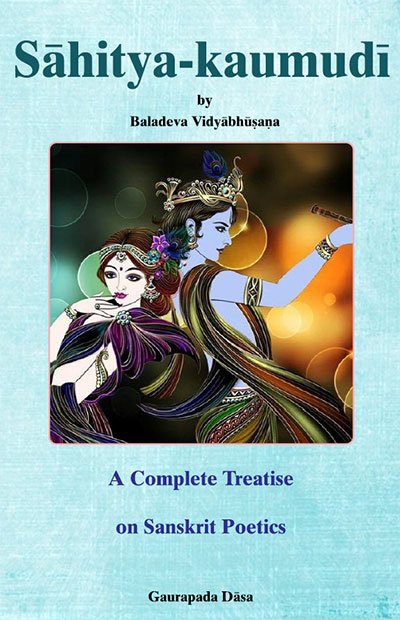Sahitya-kaumudi by Baladeva Vidyabhushana
by Gaurapada Dāsa | 2015 | 234,703 words
Baladeva Vidyabhusana’s Sahitya-kaumudi covers all aspects of poetical theory except the topic of dramaturgy. All the definitions of poetical concepts are taken from Mammata’s Kavya-prakasha, the most authoritative work on Sanskrit poetical rhetoric. Baladeva Vidyabhushana added the eleventh chapter, where he expounds additional ornaments from Visv...
Text 10.265
यमकस्य पाद-त्रय-गतत्वम् अप्रयुक्तता. यथा,
yamakasya pāda-traya-gatatvam aprayuktatā. yathā,
If a yamaka occurs in three lines of a verse, that is the fault called aprayukta (not in use) (7.25). This is an example (here the sound samānā only occurs at the end of three lines):
rādhaiva saubhāgya-vidhau sa-mānā na kāpi tasyā ramaṇī samānā |
mayūkha-jālena hi hīrakāṇāṃ bhavanti muktā-rucayaḥ samā nā ||
Only Rādhā can be proud of exhibiting loveliness. No heroine is equal to Her. Indeed, the splendor of pearls is not the same as the radiance of diamonds. (Alaṅkāra-kaustubha 8.322)
Commentary:
Moreover, according to Ānandavardhana, yamaka should not be used in vipralambha.[1]
Footnotes and references:
[1]:
dhvany-ātma-bhūte śṛṅgāre yamakādi-nibandhanam, śaktāv api pramāditvaṃ vipralambhe viśeṣataḥ (Dhvanyāloka 2.15); Jagannātha agrees (Rasa-gaṅgādhara, KM p. 72).
